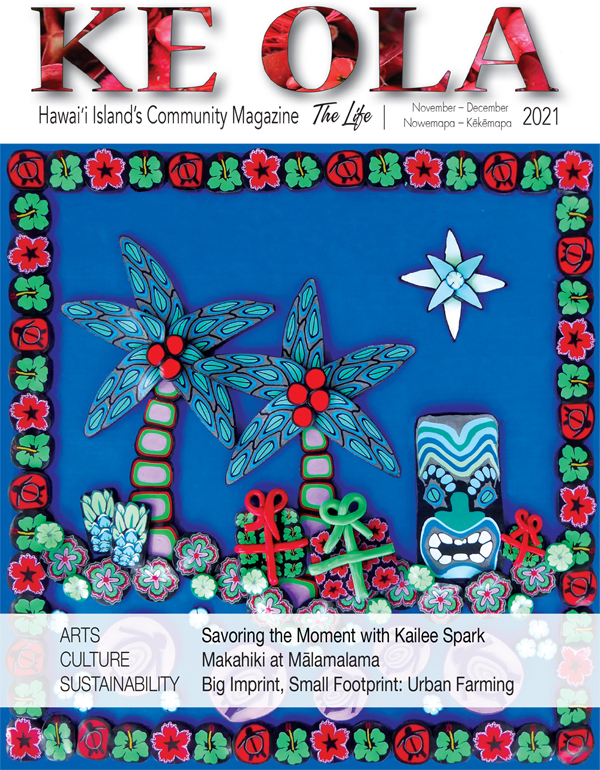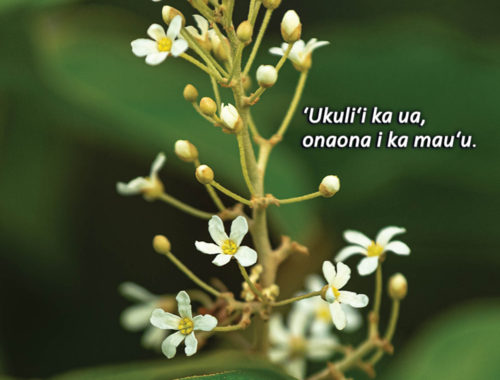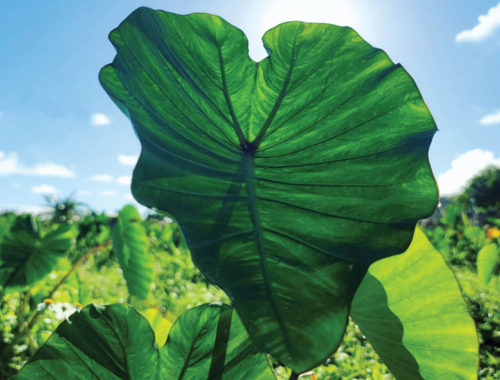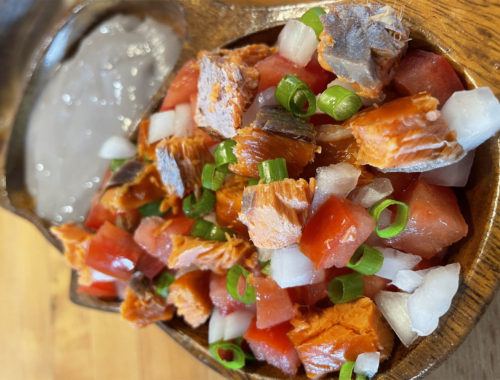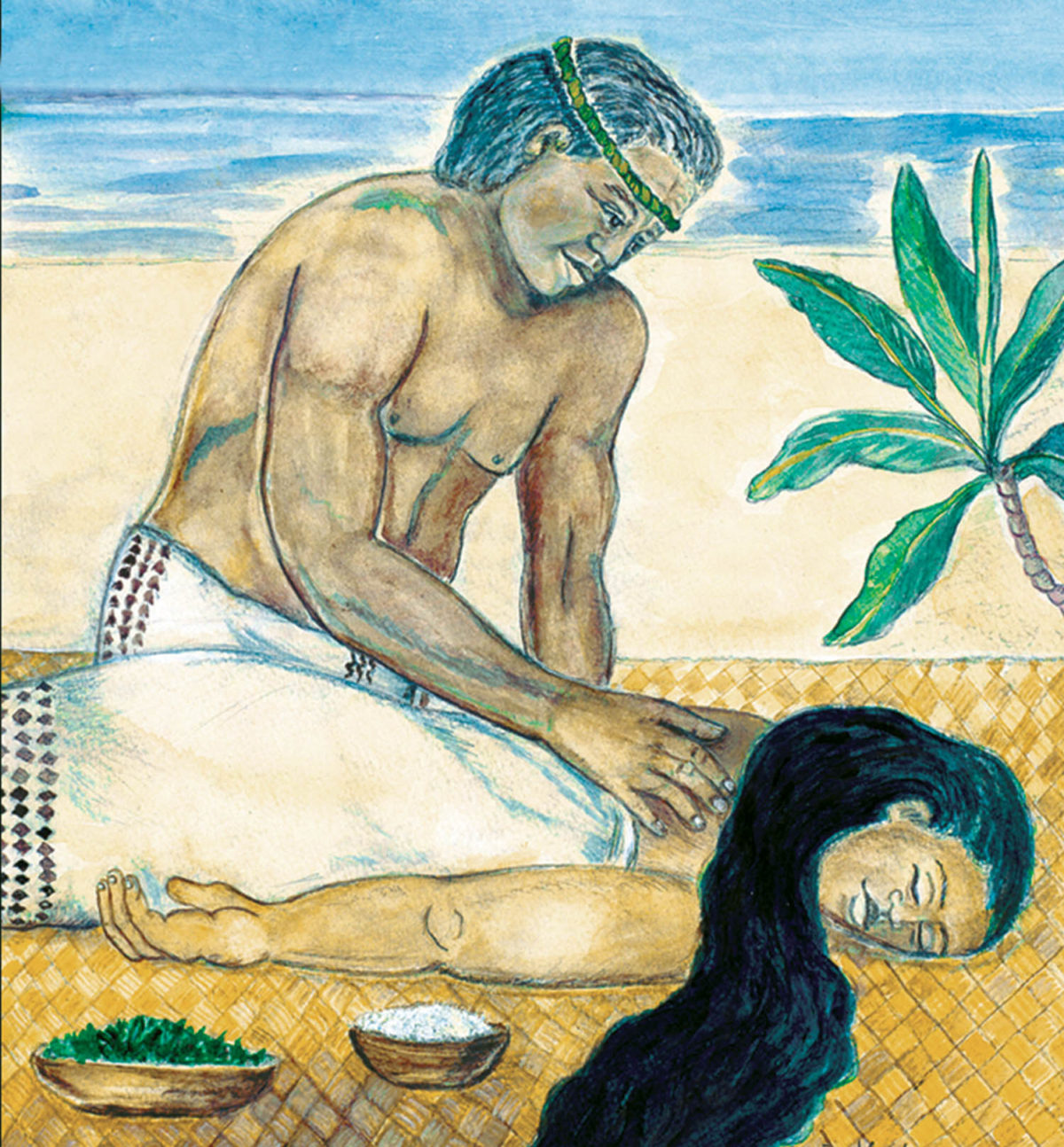
Traditional Hawaiian Lomilomi Is Alive and Well

By Nancy S. Kahalewai, LMT
It wasn’t too long after the return of the inaugural Hōkūle‘a voyage, and wave of cultural pride in its aftermath, that Hawaiian lomilomi massage also experienced its own resurgence.
Hōkūle‘a navigated the Polynesian triangle, sailing to and from Tahiti in 1976. Immediately, the excitement and historical significance of this voyage was deeply felt across the Hawaiian Islands, and throughout Polynesia. It accelerated a liberating chapter that opened doors for genuine reconnection and deeper appreciation of ancestral knowledge, such as the Hawaiian language, sustainable lifestyle practices, and healing arts, including traditional lā‘au lapa‘au (plant medicines), ho‘oponopono (making things right), and lomilomi massage.
Before this, people didn’t speak about lomilomi massage, nor was it ever advertised as a service. Lomilomi subtly existed in small family contexts, or perhaps was recognized as a special gift that a certain ‘uncle’ or ‘tutu’ had. Often it was a fading memory of a practice by a past relative, or a casual occurrence in the home or community, where one naturally massages body parts needing movement, soothing touch, or energy. Calming a baby with colic, assisting someone with indigestion or constipation, treating an injury, turning a breeched baby, or helping sore muscles after exertion—it was an everyday part of life to address these situations with skillful hands-on touch.
The true history of the art and science of lomilomi take us much further back, and this knowledge included more than physical massage techniques. Lomilomi includes a tool chest of compressions, stretches, kneading, percussions, squeezing, and soothing strokes, as well as enhancing treatments with plants, herbs, salt, heat, ‘ili ‘ili stones, lomi sticks, and saltwater.
For many centuries, traditions about Hawaiian healing practices were kept alive in narrative stories and genealogical chants. Two large classifications of practitioners were the kāhuna lā‘au lapa‘au, who used plants and medicinal materials in their practice, and the kāhuna hāhā, known as the diagnosticians, who excelled in the skills of touch.
There are legends of traditional healers who could “breathe mana into the bones” to heal fractures, and the kāhuna kahea who could heal others from great distances. According to Dr. Maka‘ala Yates, author of Na‘auao Ola Hawaii–Hawaiian Principles and Practices of Being Well, the concept of “communicating down to the bones physically and energetically is significant…It is at the bone level that all memory is stored from past traumas, injuries or emotional links. As with many indigenous cultures, the bones are the most important and protected part of the physical structure…Tapping into the bones allows the Lomilomi practitioner to communicate on a soul level so healing can take place.”
Lomilomi History
In the 1700s and 1800s, there was a registrar of healing practitioners. The Territory of Hawai‘i passed legislation to have traditional practitioners licensed in 1917, which continued with the Department of Health in later years. Prior to World War II, permits were required to dispense traditional herbal medicines, and many native practitioners also received formal training in pharmacy, naturopathy, surgery, and other Western medical specialties. In 1946, Elias Liko Jones, Kahuna Lapa‘au Lau Lā‘au o Hawai‘i Nei, explained his healing technique that he did “from the heart, not the pocketbook.” He “cured” simply by herbs (to clean out and tone the system), a semi-fast of fruit juices and water to rest the organs, then massage (to introduce and stimulate the patient’s vital energy), and patience. These and other stories can be found in KAHUNA Traditions of Hawaiian Medicinal Priests and Healing Practitioners, by Malcolm Naea Chun, PhD.
Gradually, local traditional practices were pushed out with government regulation, while the Hawaiian lifestyle and language were also suppressed. Eventually statehood was passed, and the Department of Health, under the Department of Commerce and Consumer Affair’s Division of Private Vocational Licensing, began issuing licenses for massage. Meanwhile, the old kāhuna skills were forbidden.
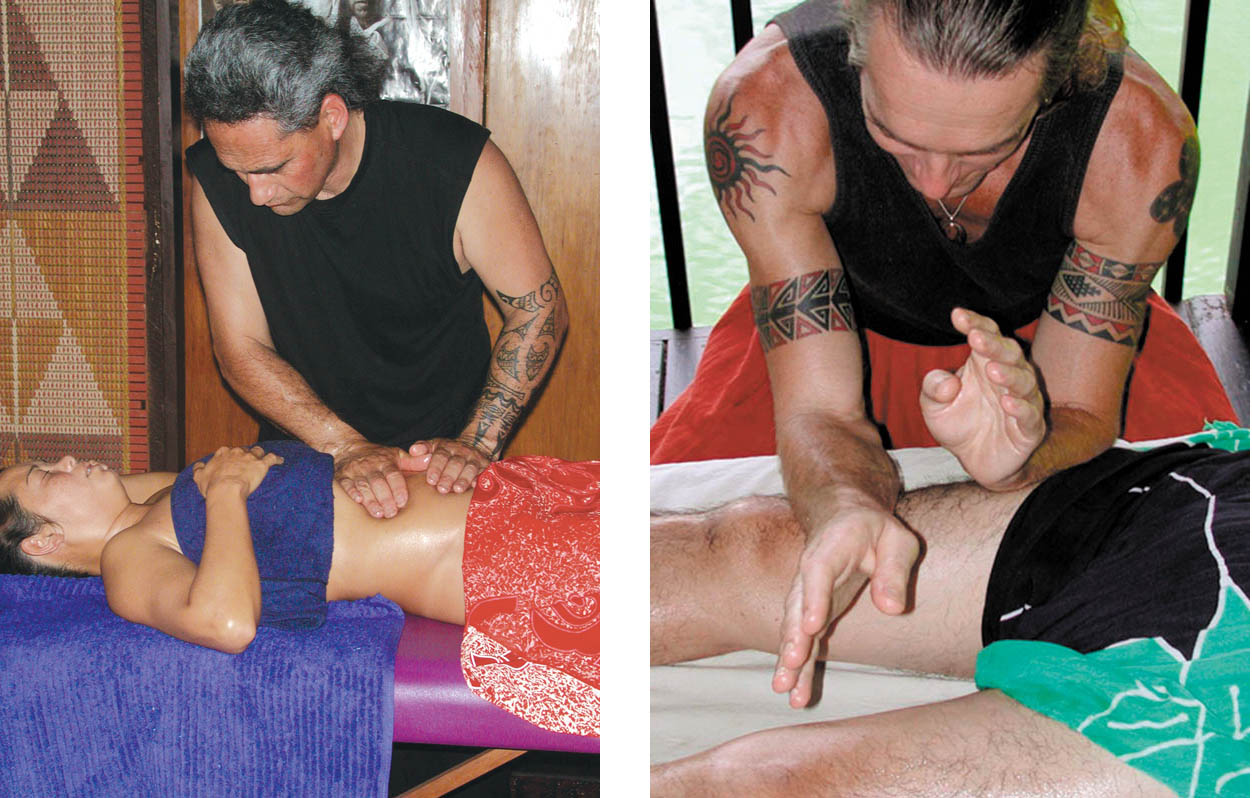
By the 1960s, “hippies” were flocking to Hawai‘i. In South Kona, they found an amazing Hawaiian woman, fondly remembered as “Aunty Margaret” Machado, with amazing healing skills. She soon gained wide recognition for helping people, using the power of akua (God), deep intuitive perception skills, and her famous saltwater colon cleanses. Unlike most native practitioners, Aunty Margaret was also a state licensed massage therapist. With her nursing background, she passed the Hawai‘i massage exam, which allowed her to legally teach and train apprentices. She had a unique healing gift, passed down from her grandfather, enabling her to “see” deep into the patient’s energetic and spiritual patterns. Doctors would send her their patients who had not responded to anything in their medical skillset. People near and far would travel to her for help, disclosing their journey of suffering and medical history. She would listen deeply, smile, and then reply with something seemingly unrelated, such as, “You need to forgive your uncle!” She was amazingly accurate and in this way, she gained respect and achieved noteworthy results.
Meanwhile, on the east side of Hawai‘i Island, other local healers were in the making. Hilo’s Mary Fragus became a self-trained specialist in lomilomi, as well as prenatal massage. She had contracted polio as a child, thus worked on a floor mat, and would put expectant mothers “on all fours’” to gently lomi the abdomen. She was never state licensed, but her pure spirit and expert skills were renowned within the community.
By the late 20th century, lomilomi was making its way into spas, clinics, and international circles. The fascination of Polynesia and the thirst for traditional indigenous knowledge were at unprecedented levels of appreciation. Part of this was because of a shift from kapu (restrictions) put in place for protection of sacred knowledge, as well as the cultural suppression following colonization. The grassroots desire for knowledge, self-awareness, healing concepts, and a wholistic understanding of the body was flourishing. The lomilomi secret was out and the world wanted more!
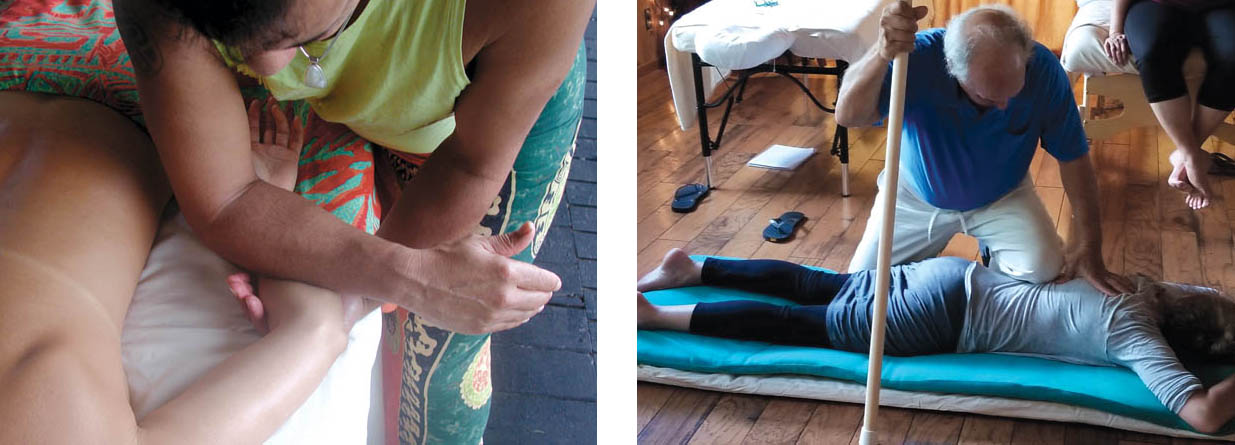
What makes Lomilomi unique and effective?
Lomilomi, sometimes translated into “breaking up into small pieces” (as in lomilomi salmon), is much more than massage. Typically, techniques are administered with the hands, forearms, elbows and feet, while the recipient is seated or lying on the floor or a table. Lomilomi can break up those “knots” of tension, traumatic memory, and scar tissue held in the body, bringing fresh circulation, flushing out metabolic waste, and restoring function and mobility. It can restore and renew the mana (life force) of the person’s body, mind, and spirit, as well as helping to increase function of certain organs and tissues, such as the ‘ōpū (intestines).
Treatments begin and end with intention and pule (prayer) to align both the practitioner and recipient to the highest healing outcomes possible, during and after the session.
Lomilomi, also called tau romi, romiromi, mirimiri, and many other names in the South Pacific, has a unique way of embedding ho‘oponopono into its practice. While the word pono carries the same meaning, the concept of mindfully practicing pono—of making things right or aligned—seems to be Hawaiian in origin. It is a common practice in Hawai‘i that has existed for centuries. It was also adopted and practiced within Christianity and professional counseling circles. The old stories refer to the deep, divine spark within all, and recognize that it is this indwelling light that is the innate source of one’s radiance and inner mana.
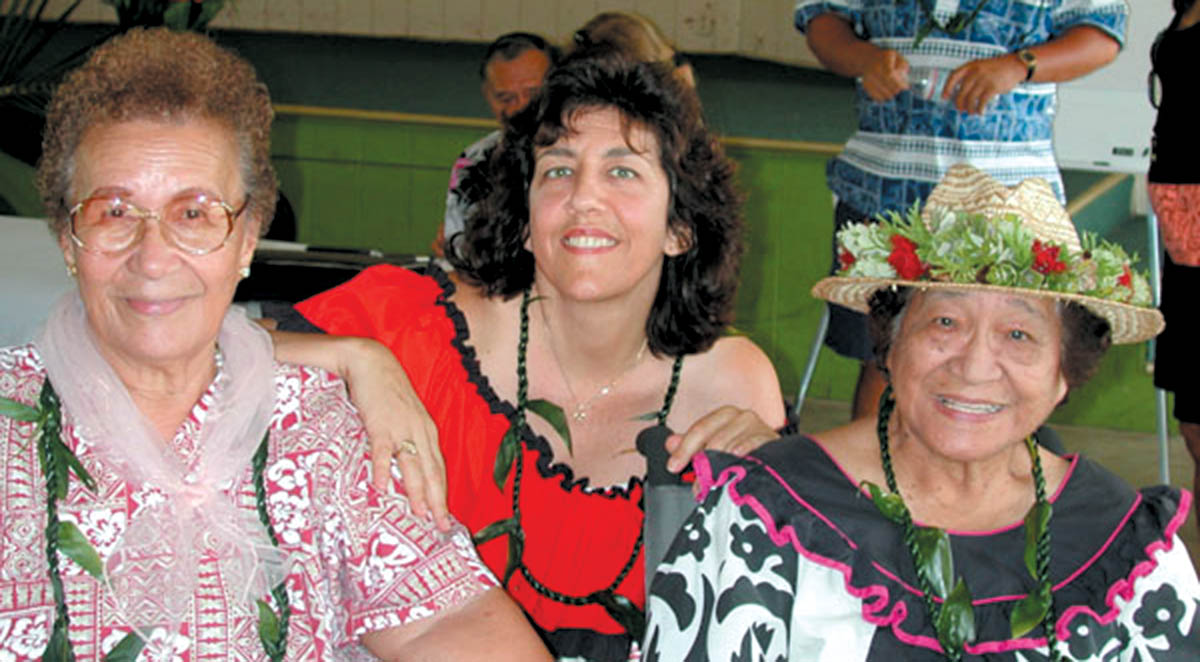
This is where the sacredness of lomilomi can take us deeper yet. The use of the breath combined with divine guidance enables a lomilomi master to tap into higher states of awareness. The energetics may begin to shift, and a mutual zone of trust and knowingness unfolds. The breath deepens, the mind quiets, the heart opens, and time itself seems to shift. The person giving the session may find that his or her hands gravitate to certain places on the body that seem to be calling for attention. Subtle levels of palpation are heightened as heat, tension, density, and blocked energy begin to dissolve. Stored emotions begin to seep out of their hiding places, while new layers of clarity and peace unfold.
By this time, both the practitioner and recipient may sense the presence of ancestors and guiding wisdom. Old memories and new insights may arise while the present-moment awareness begins to expand. At this point, whatever needs to be released, may be released, and whatever needs to be restored, may be restored. A sacred understanding renews the spirit and infuses the breath.
For those who want to learn more of this ancient art of healing, take time to seek out a lomilomi teacher or practitioner that you are comfortable with. Ask questions about their training, who their teachers were, how long they trained, and what their specialty is. Some of Aunty Margaretʻs students became teachers, and they and their students are practicing around the world. A few practitioners carrying on this lineage, here on the island, include Lehua Hobbs, Suzanne Kamaluhia Woolley, Jeanella Bingham-Keopuhiwa, Swami Om, Haunani Hopkins, and Dane Kaohelani Silva.
Swami Om reflects, “Aunty taught us, ‘Lomilomi is a connection between heart, hand and soul with the source of all life. Love the body as if it were your own. If your hands are gentle and loving, your patient will feel the sincerity of your heart.’”
Lomilomi massage should never push you into vulnerability or pain; rather, it should assist you to feel genuinely infused with the aloha spirit, with increased self-awareness and peace of mind. ❖
For more information: howtolomilomi.com
